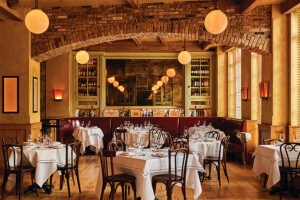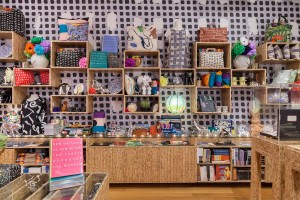Iconic Philly Jeweler Steven Lagos’s Three Favorite Artists at the Barnes
The designer talks growing up in Philly, what inspires his instantly recognizable jewelry, and advice for aspiring artists.
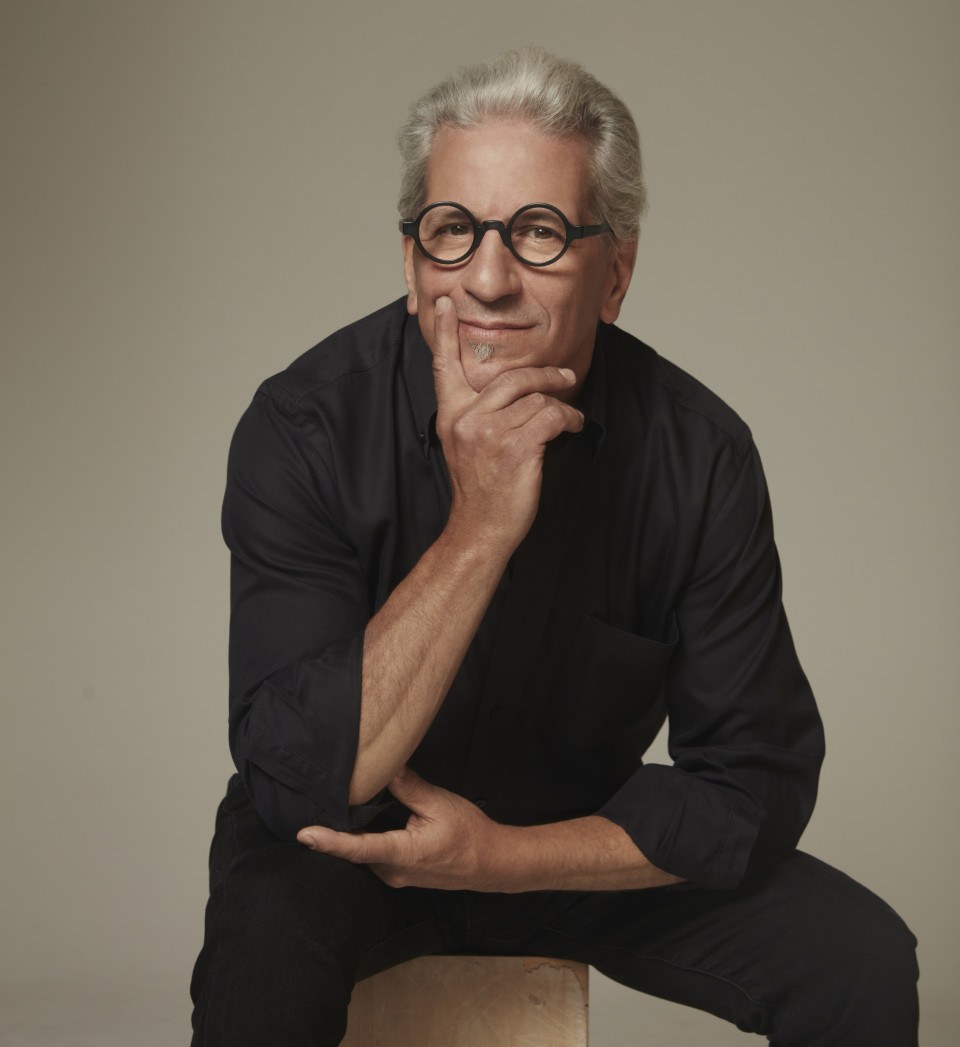
Steven Lagos / Photograph courtesy of Lagos
“Every time I come, I get chills.”
Steven Lagos, dressed in head-to-toe-black as usual, was visiting the Barnes Foundation to reflect on his artistic inspiration with the museum’s senior vice president Nina Diefenbach. His eponymous jewelry brand celebrates its 45th anniversary this year.
“We’re living in a time where everything is measured by likes,” Lagos said, contrasting today’s content creators with artists like Amedeo Modigliani, who was harshly criticized and unappreciated in his own time (save for Dr. Barnes, his primary patron, who bought the artist’s paintings in bulk), yet persisted in his distinctive style until his untimely death. Though he died destitute, Modigliani’s 1917 work Nu couché (sur le côté gauche) was the most valuable work ever sold at Sotheby’s a century later, Lagos noted. “I wonder how many of us today are doing something so creative that 100 years later people will still be praising it,” he mused.
Unsurprisingly, then, Modigliani was one of three artists from the Barnes’s collection that Lagos identified as a favorite — in particular, his portrait of Léopold Zborowski, below:
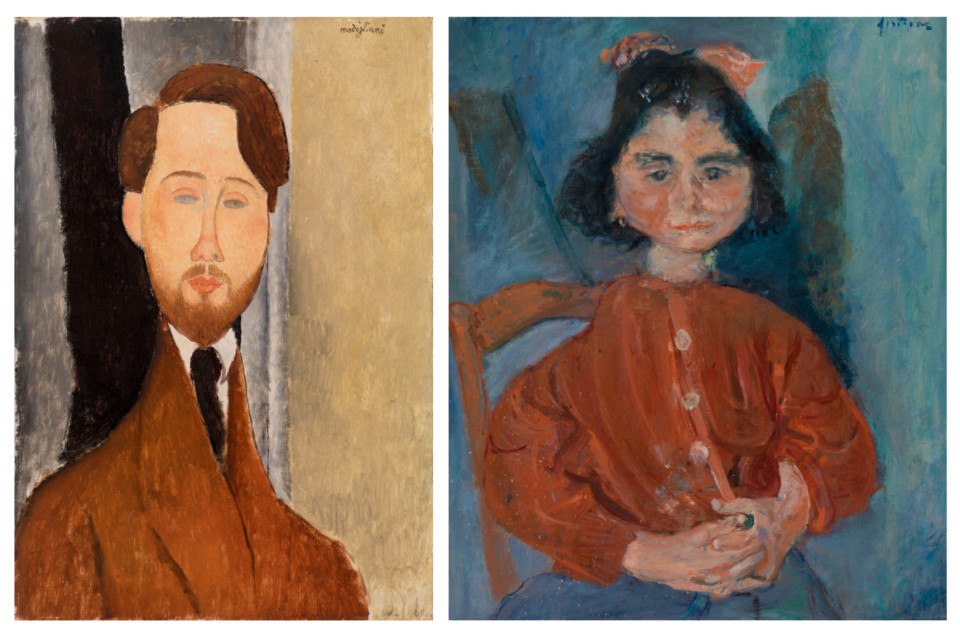
Two of Steven Lagos’s favorites at the Barnes: Amedeo Modigliani’s Léopold Zborowski, 1919. BF261 / Image courtesy of the Barnes Foundation (left) ; Chaim Soutine’s Young Girl in Red Blouse (La Petite fille en rouge), c. 1919. BF952. © 2022 Artists Rights Society (ARS), New York / ADAGP, Paris.
Also created in 1919 Paris, Lagos named Chaïm Soutine’s Young Girl in Red Blouse as another favorite.
The fact that so many of the artists featured in the Barnes collection were living in the same place at the same time, and that the namesake collector was able to recognize this emerging “hotbed of collaboration” that so few in the art world respected, is not lost on Lagos; yet he also noted of Barnes’s idiosyncratic curation: “You don’t need to know the artists’ names or even the chronology. … Barnes just wanted you to feel something. He was collecting for the love of it, which I think is pretty romantic.”
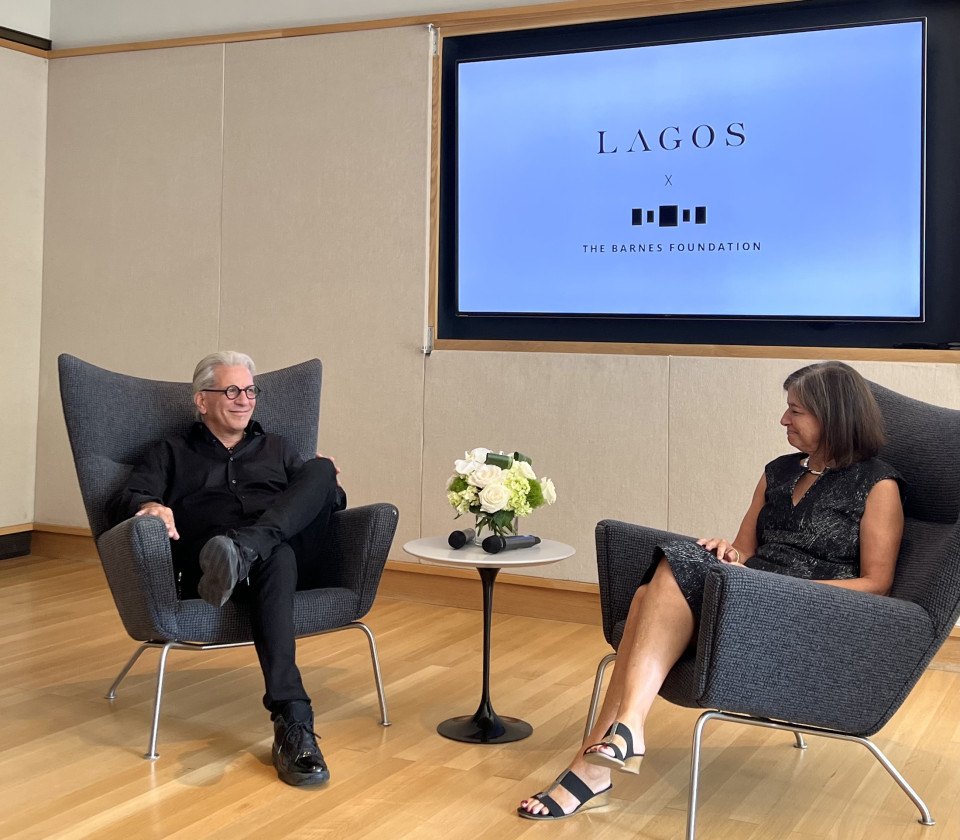
Steven Lagos and Nina Diefenbach at the Barnes Foundation / Photograph by Laura Swartz
He knows a little something about that. Growing up in Philly, “I always knew I wanted to do something creative,” Lagos recalled. “In the ’70s if you had learning disabilities, they didn’t know what to do with you. It was like, ‘just sit over there and draw your pictures and don’t disturb the class.’” So, he took children’s painting classes at the Philadelphia Museum of Art on Saturdays and was encouraged by his parents to pursue his passions.
Lagos’s father had aspired to be an artist, but instead took the more practical path of starting a laundry business. The business was lucrative, but he was not without regrets, and wouldn’t even allow young Steven to work at the family shop. “He said, ‘I’ll pay you 50 cents an hour if you want to work here.’” Minimum wage at the time was $2.50.
Lagos dabbled in many art forms before settling on jewelry in 1977; and it wasn’t until 1984 that he discovered his signature Caviar design which has carried through into today.
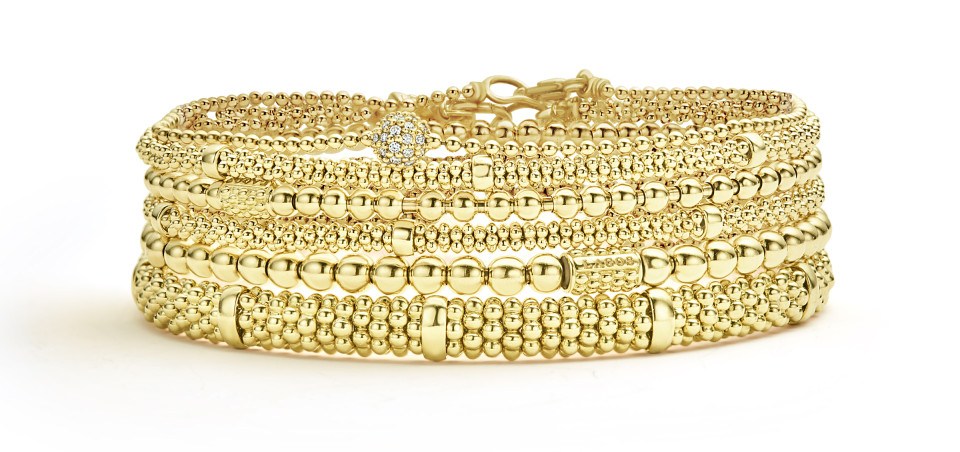
A Lagos Caviar bracelet / Photograph courtesy of Lagos
“In order to really develop a brand, I really needed to pick something and lock into it, and develop that into a lifetime of jewelry,” he explained, advising that a distinctive “signature” style is a key to success for any kind of artist.
A charming nod to his trademark, Lagos revealed his third favorite artist: pointillist Georges Seurat. “He was like a scientist. He used these little dots to create dimension and a color story. I work with little dots, too.”
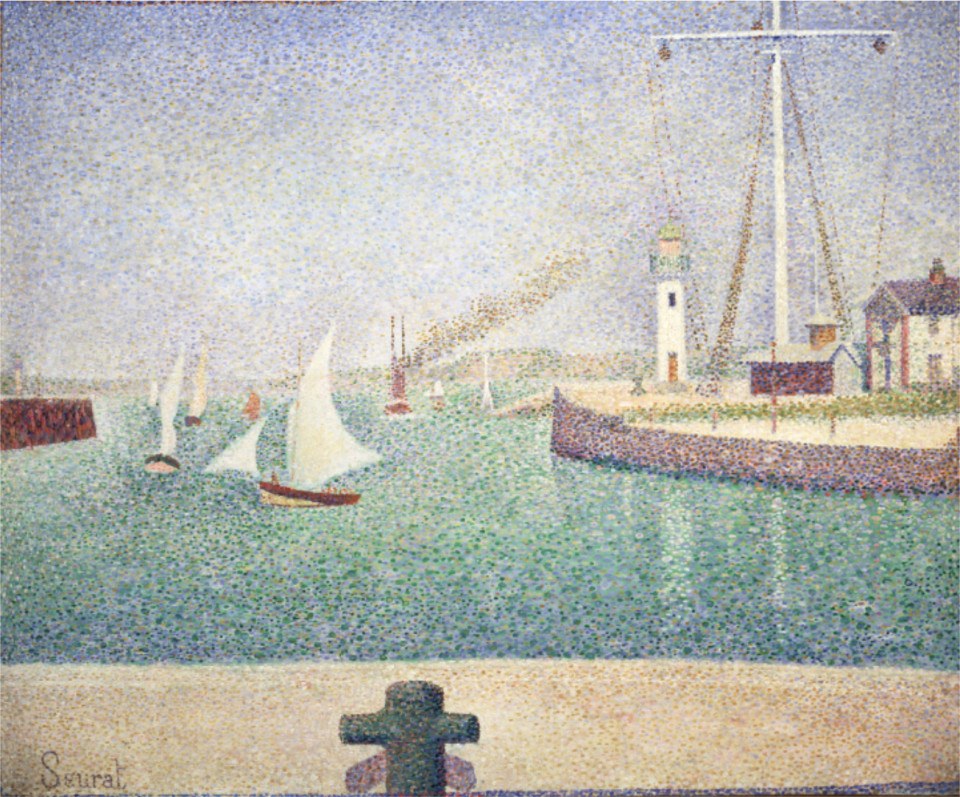
Georges Seurat’s Entrance of The Port of Honfleur (Entrée du port d’Honfleur), 1886. BF942 / Image courtesy of the Barnes Foundation
Lagos continues to draw inspiration from travel and art, sharing photos of his colorful office which houses his personal collection of pop art by KAWS and Murakami. (He identified the collaboration and innovation emerging out of Japanese-inspired “superflat” art as a modern-day analog to Paris a century ago, in case you were wondering.) And like his own parents, he encouraged his daughter Kate to pursue a creative career — she works alongside her father as Lagos’s brand stylist.
Like his iconic jewelry, all three artists Lagos selected boasted unique styles that made their work “instantly recognizable,” an early form of brand-building before that was even a thing. “These people were so dedicated to their vision and what they were doing,” he said, offering a final, simple piece of advice for young artists: “Find something you love and stay true to it.”

